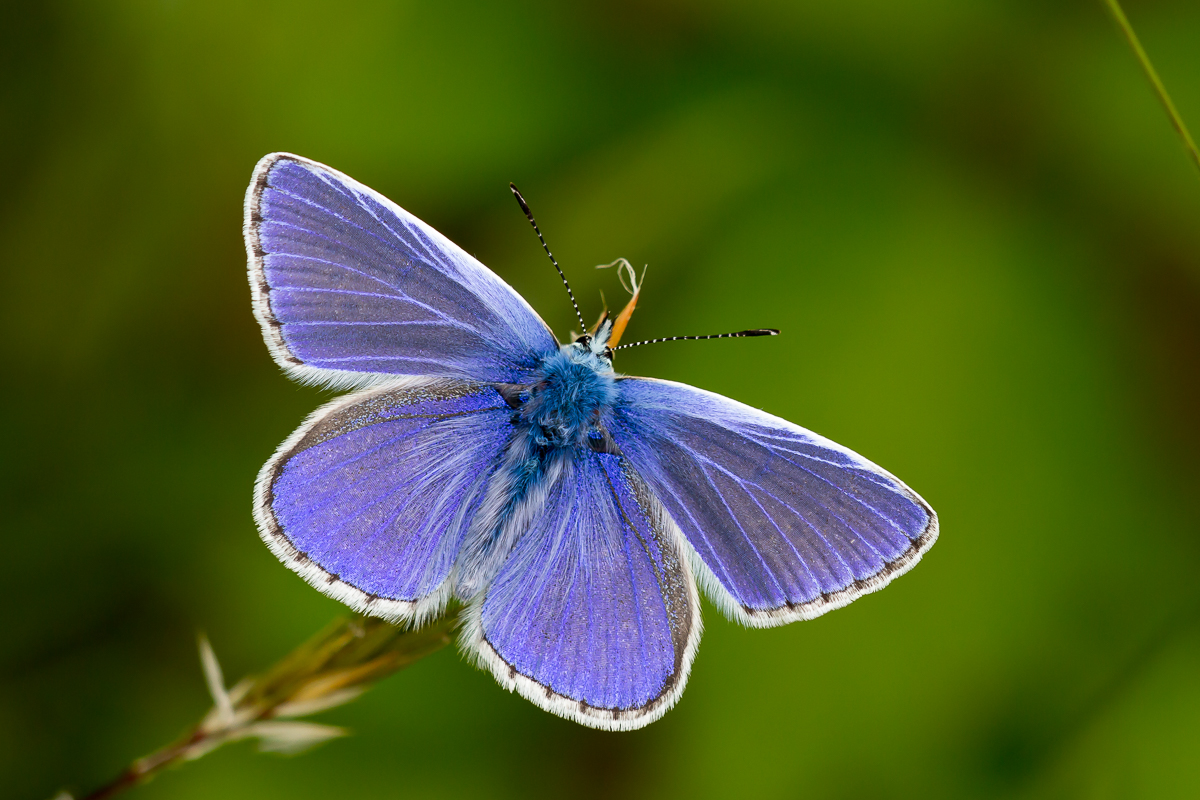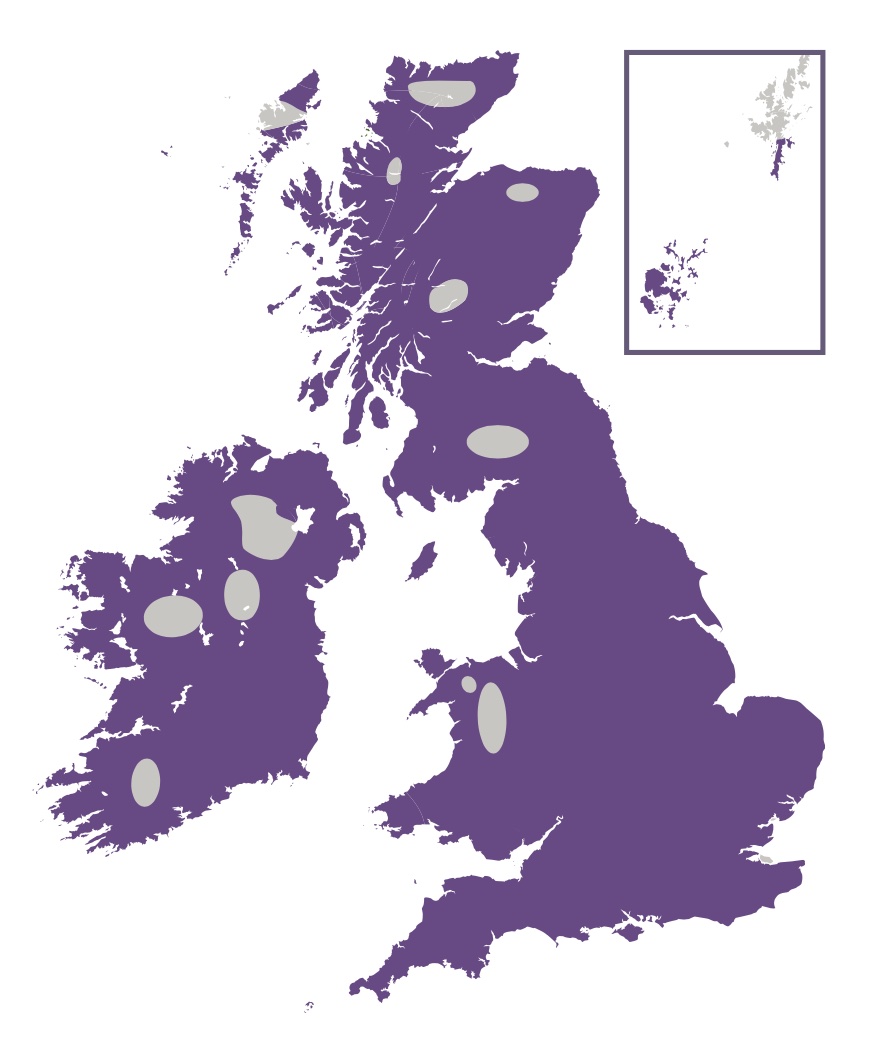
Photo © Peter Eeles
Living up to its name, this butterfly is the commonest blue found in the British Isles. While the male has bright blue uppersides, the female is primarily brown, with a highly variable amount of blue. This is the most widespread Lycaenid found in the British Isles and can be found almost anywhere, including Orkney. It is absent, however, from Shetland and the mountainous areas of Wales and Scotland. This butterfly forms reasonably discrete colonies measured in tens or hundreds, with individuals occasionally wandering some distance.
This species is most active in sunshine and is a frequent visitor to flowers. Males are the more active of the two sexes and set up territories which they patrol in search of females. The female is less conspicuous, spending most of her time nectaring, resting and egg-laying. When egg-laying, the female makes slow flights, low over the ground, searching out suitable foodplants on which to lay. When a suitable plant is located, a single egg is laid on the upperside of a young leaf.
In dull weather this species roosts head down on a grass stem. As for similar species, such as the Brown Argus, this species roosts communally at night, with several individuals occasionally found roosting on the same grass stem.

This species is found in a wide variety of habitats, including unimproved grassland such as roadside verges and waste ground, downland, woodland clearings, heathland and even sand dunes.
Adults feed primarily on Bugle (Ajuga reptans), clovers (Trifolium spp.), Common Bird's-foot-trefoil (Lotus corniculatus), Common Fleabane (Pulicaria dysenterica), Kidney Vetch (Anthyllis vulneraria), knapweeds (Centaurea spp.), ragworts (Jacobaea spp.), thistles (Carduus spp. and Cirsium spp.), vetches (Vicia spp.), Wild Marjoram (Origanum vulgare) and Wild Thyme (Thymus drucei).
The primary larval foodplant is Common Bird's-foot-trefoil (Lotus corniculatus). Black Medick (Medicago lupulina), Common Restharrow (Ononis repens), Greater Bird's-foot-trefoil (Lotus pedunculatus) and Lesser Trefoil (Trifolium dubium) are also used.
